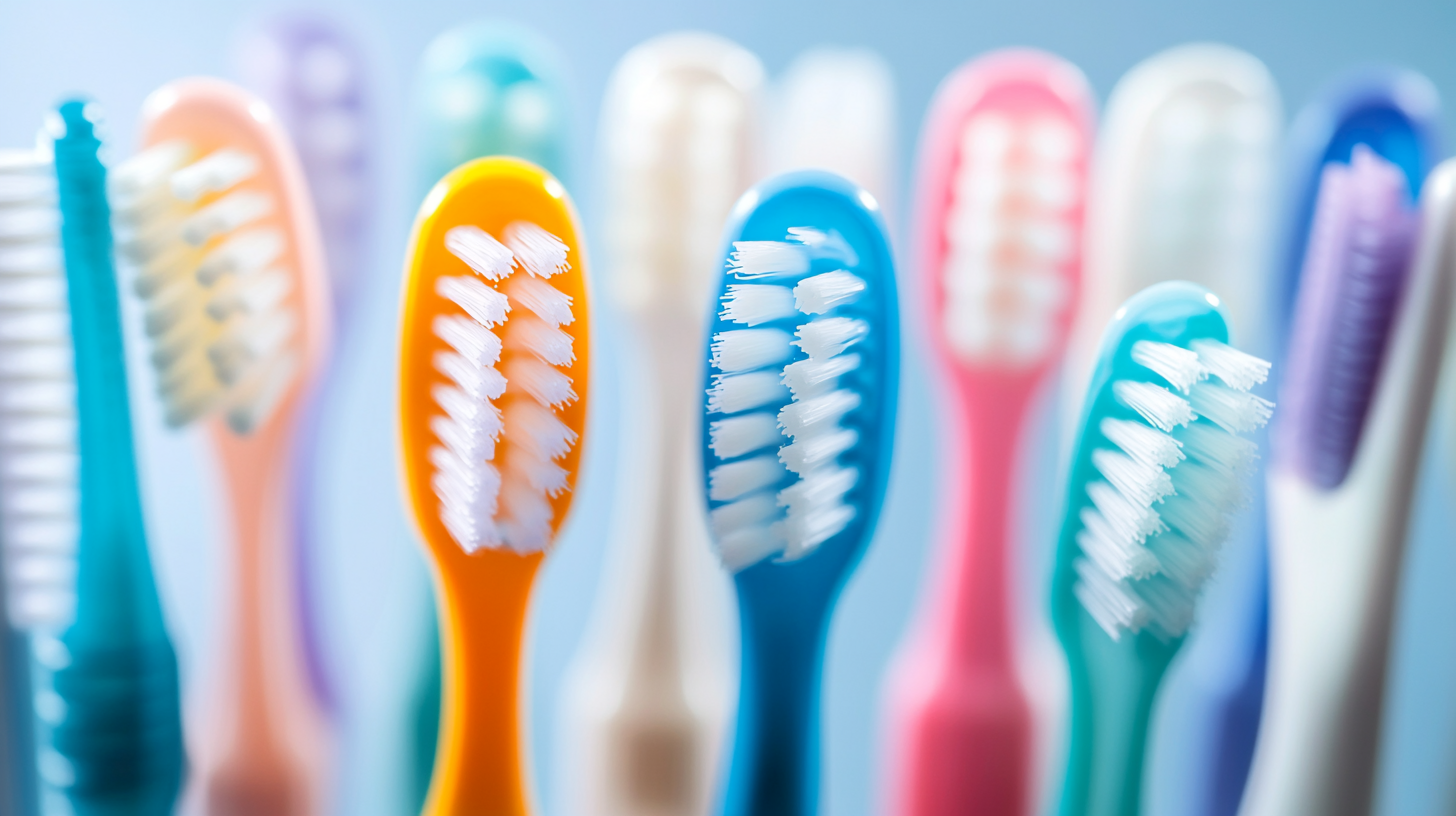Comprehensive Guide to Dentist Cleaning Equipment Specifications and Performance Metrics
In the realm of dental care, the significance of effective dentist cleaning techniques cannot be overstated. According to the American Dental Association, nearly 90% of oral diseases can be prevented with regular dental hygiene practices, highlighting the critical role that dental cleanings play in maintaining overall health. This reinforces the need for dental practitioners to be well-informed about the specifications and performance metrics of the cleaning equipment they utilize. The right tools not only enhance efficacy but also ensure patient comfort and safety, ultimately shaping the quality of care delivered.
Recent reports from the Dental Research Journal indicate that the dental equipment market is projected to reach $8 billion by 2025, driven by advancements in technology and increasing awareness regarding oral health. As the industry evolves, staying abreast of the latest developments in dentist cleaning equipment becomes essential for practitioners aiming to provide exemplary services. This comprehensive guide delves into the specifications and performance metrics that define successful dental cleaning, equipping professionals with the knowledge to make informed decisions about their tools and techniques.

Understanding the Essential Types of Dentist Cleaning Equipment in Modern Practices
Understanding the essential types of dentist cleaning equipment is crucial for modern dental practices aiming to maintain high standards of hygiene and patient care. Among the most critical tools is the ultrasonic scaler, which utilizes high-frequency sound waves to remove calculus and plaque from teeth. This equipment not only enhances the efficiency of the cleaning process but also minimizes discomfort for patients, making routine cleanings quicker and more effective. Another vital piece of equipment is the air-water syringe, which allows dentists to effectively irrigate and dry areas of the mouth during procedures. This tool is invaluable for ensuring visibility and access during examinations and cleanings. Furthermore, high-speed handpieces have transformed dental cleaning by allowing for swift and precise removal of decay or buildup. These advancements in technology have significantly improved the performance metrics of dental cleaning, emphasizing the importance of investing in high-quality equipment. Moreover, the integration of advanced sterilization equipment, such as autoclaves and chemical sterilizers, plays a pivotal role in maintaining a sterile environment, thus preventing cross-contamination. These systems not only follow stringent health regulations but also reassure patients about their safety in the dental chair. As modern practices continue to evolve, staying updated on the latest cleaning equipment specifications is essential for delivering optimal dental care.

Key Performance Metrics Used to Evaluate Dental Equipment Efficiency and Effectiveness
When assessing dental cleaning equipment, understanding the key performance metrics is crucial for evaluating its efficiency and effectiveness. These metrics provide a benchmark against which dental practices can measure the quality and reliability of their instruments. Key performance indicators (KPIs) such as cleaning efficacy, operational speed, and maintenance requirements should be at the forefront of any evaluation process.
Cleaning efficacy measures how effectively the equipment can remove plaque, tartar, and other debris from dental surfaces. This is often quantified through standardized tests that replicate real clinical conditions, enabling practitioners to compare different devices objectively. Operational speed is another essential metric, highlighting the time taken to perform cleaning procedures. Faster equipment can enhance patient turnover rates, thus improving the overall efficiency of a dental practice.
Maintenance requirements represent a critical consideration for long-term usability. Equipment that demands frequent repairs or specialized servicing can lead to increased downtime, which is detrimental to both patient care and practice profitability. By focusing on these key performance metrics, dental professionals can make informed choices about their equipment investments, ensuring they select tools that not only provide superior cleaning outcomes but also align with their practice's operational goals.

Industry Standards: Recommended Specifications for Dental Hygiene Tools and Devices
When discussing the recommendations for dental hygiene tools and devices, it becomes crucial to consider the industry standards that govern their specifications and performance metrics. The growing emphasis on infection control and the safety of dental practices has led to a heightened focus on the materials and designs of dental cleaning equipment. As outlined in recent surveys and market reports, adhering to stringent specifications ensures that tools are not only effective in maintaining oral hygiene but also safe for both patients and practitioners.
In particular, the recent push towards using single-use dental burs and diamonds highlights a pivotal shift in the dental industry. This approach minimizes cross-contamination risks and aligns with contemporary infection control practices. Dental sterilization technicians have emerged as essential team members, responsible for ensuring that all equipment is properly sorted, cleaned, and sterilized. Their role is fundamental in maintaining compliance with the recommended specifications that help prevent infections and guarantee patient safety.
Moreover, new legislation regarding consumer product safety underscores the need for dental tools to be free of harmful substances, such as PFAS. As dental practices continue to prioritize high-performance instruments, the integration of personal protective equipment (PPE) alongside these tools is equally critical. Industry standards will evolve, and dental professionals must stay informed about the recommended specifications to ensure their practice not only meets legal requirements but also upholds the highest possible hygiene levels.

Comparative Analysis of Manual vs. Automated Dental Cleaning Technologies
The dental industry has witnessed a significant evolution in cleaning technologies over the years, prompting a comparative analysis of manual versus automated dental cleaning technologies. Manual cleaning instruments, such as hand scalers and curettes, have been the cornerstone of dental hygiene practices for decades. Their advantages lie in the tactile feedback they provide, allowing dentists to gauge pressure and precision while removing plaque and calculus. However, this method can be time-consuming and may lead to fatigue for practitioners, especially during prolonged procedures.
In contrast, automated dental cleaning technologies, including ultrasonic scalers and piezoelectric devices, offer a modern alternative that enhances efficiency. These technologies utilize vibrations and high-frequency sound waves to break down deposits, reducing the time required for each cleaning session. Additionally, they often minimize operator strain, allowing dental professionals to focus on technique rather than the physical demands of the tools. Recent studies have shown that automated systems can achieve comparable, if not superior, results in terms of cleanliness and patient comfort.
When choosing between these two approaches, factors such as patient preferences, treatment complexity, and the specific requirements of different dental practices should be considered. While manual cleaning offers a level of control that many professionals cherish, the speed and effectiveness of automated technologies cannot be overlooked. Ultimately, the choice may not be a strict either/or but could merge both methods to maximize patient outcomes and operational efficiency in dental cleanings.
Future Trends in Dental Cleaning Equipment: Innovations and Emerging Technologies
The dental industry is witnessing a revolution as innovations in cleaning equipment are poised to enhance both efficiency and patient comfort. Emerging technologies such as ultrasonic scalers and laser cleaning devices are rapidly changing the landscape of dental hygiene. Ultrasonic scalers, for instance, utilize high-frequency vibrations to disrupt plaque and calculus, offering a more effective and less time-consuming alternative to traditional manual methods. This shift not only reduces the effort required by dental professionals but also minimizes discomfort for patients during routine cleanings.
In addition to ultrasonic technology, the integration of artificial intelligence (AI) into dental cleaning equipment heralds a new era of personalized dental care. AI-driven tools can analyze a patient's dental history and hygienic needs, allowing for tailored cleaning procedures that enhance treatment outcomes. Furthermore, smart dental tools equipped with IoT capabilities can track usage patterns and share real-time data with dental professionals, ensuring a high standard of care and enabling proactive maintenance of the equipment itself.
As we look to the future, it's evident that advancements in dental cleaning equipment are not just about improving efficiency; they also focus on enhancing the overall patient experience. The development of quieter, less invasive tools and the incorporation of ergonomic designs are key trends that prioritize patient comfort. As these innovations continue to emerge, the dental community must adapt and embrace these changes to provide superior care while keeping pace with evolving technology.

